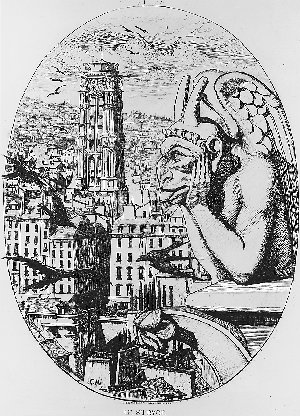 |
|||
|
|
|
|
|
 |
|||
|
|
|
|
|
The 1999 Carnegie International: Local and Global Media Praise InternationalBy Ellen S. WilsonDave Crawley, KDKA "Water, sand and even spices are being used to reach all the viewers’
senses at this International."
"What ties this exhibition together so well . . . is Grynsztejn’s
particular state-of-the-arts vision."
"Coolly elegant, a quiet revelation"
"One of its pleasures is in how the Carnegie seems the perfect place
for artists who have sometimes come from half a world away."
The local media approached the Carnegie International with a slew of thoughtful, and thought-provoking, reviews. It is revealing, however, to see what the out-of-towners had to say about our cultural treasure. London’s Art Newspaper describes the International in glowing terms: "It rewards even the most casual visitor with a series of rich, revelatory pleasures which create a tonic argument for the continued relevance of contemporary art." The article singles out the paintings of Alex Katz, the Sculpture Court installation by Olafur Eliasson, Ernesto Neto’s fabric structure, and says, "This show demonstrates that installation art must be impeccably installed if it is to be effective. And the hanging, spacing and detailed presentation is indeed exemplary." Many other critics praised the installation decisions made by Madeleine Grynsztejn and the museum staff. Roberta Smith, in The New York Times, noted the juxtaposition of Neto’s structure with the paintings of nudes by John Currin, "smiling, teasing, refusing to be deciphered." Writing in Time Out: New York, Bill Arning cited Eliasson’s "wonderfully contemplative piece made all the more profound by its proximity to Katz’s paintings," and concludes that "Grynsztejn’s International is a good example of how to do a megashow right." The placement of Martin Kippenberger’s The Happy End of Franz Kafka’s "Amerika" in the grand setting of the Hall of Sculpture also drew praise, as did Kara Walker’s stark silhouettes of ante-bellum race relations in that same hall, which was originally inspired by the ideals of Western culture. Toronto’s Globe and Mail pronounced the exhibition "a must-see for contemporary
art lovers," and the show played especially well in Cleveland, where both
the Plain Dealer and the Free Times gave it a rave. To quote critic Steven
Litt of the Plain Dealer: "The show is big, energetic, and optimistic.
It sends you away feeling elated about the creative possibilities of the
new century. And it’s not afraid of beauty."
|
Get ready for "the metal of the future"Aluminum by Design: Jewelry to Jets – opens October 28, 2000
When aluminum was first produced in the mid-19th century, it was crafted into jewelry and more highly prized than diamonds and gold. Towards the end of the 19th century, an electrolytic process for obtaining this new metal enabled the first truly industrial and commercial production of aluminum, dropping its price dramatically and leading to many new uses. Organized by Carnegie Museum of Art, this major international loan exhibition demonstrates the history of aluminum through a wide range of objects including cars, furniture, household objects, clothing, jewelry, and more. Aluminum revolutionized the home, transportation, and modernist design, and is inextricably linked to Pittsburgh’s own history, although an aluminum industry did develop simultaneously in Europe. An early advocate was Emperor Napoleon III of France, who recognized its potential for military use. Designers, artists, and architects who appreciated its qualities include Charles Christofle, René Lalique, Buckminster Fuller, Marcel Breuer, and Philippe Starck. "Visitors to the show will be astounded by how widely aluminum has been used," says Sarah Nichols, chief curator and curator of decorative arts. "It was the metal of the future in the 1850s, and it still is today." After closing in Pittsburgh in February 2001, the exhibition will travel to the Cooper-Hewitt National Design Museum in New York as well as other centers of innovative design in the United States, Montreal, and London. Aluminum by Design: Jewelry to Jets is made possible by the generous sponsorship of Alcoa Foundation.
|

Charles Meryon, Le Stryge (The Vampire), 1855 Charles Meryon and Jean-François Millet: Etchings of Urban and Rural 19th-Century FranceFebruary 6 – April 23, Scaife GalleriesMeryon wrote in a letter to his father that he saw in this figure the personification of Lust. Known primarily for his views of Paris, which lies in the background, Meryon drew on a gargoyle on the north tower of Notre Dame as inspiration for this print. |
|
|
|
|
|
|
All rights reserved. E-mail: carnegiemag@carnegiemuseums.org |
|||